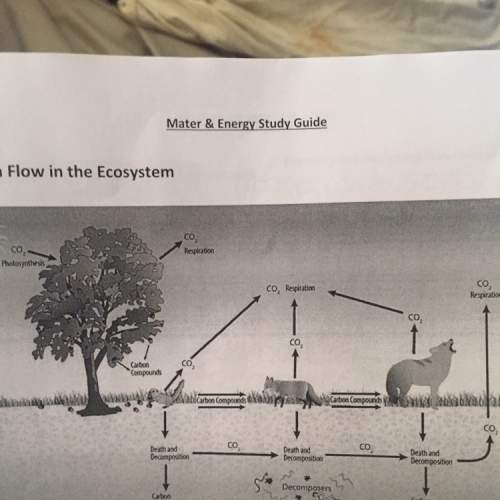
Biology, 12.07.2019 18:50 netflixacc0107
At one time, most people believed that the universe was static, meaning it did not change. when larger and better telescopes were invented in the early 1900s, however, it was discovered that light from objects in space shifted toward longer wavelengths. scientists concluded that only an expanding universe could explain this shift. which of the following statements is supported by this example? a. the theory of the expanding universe cannot change, even if new evidence arises. b. scientific knowledge can change when new evidence or interpretations arise. c. the principle of the expanding universe is a scientific law. d. once a scientific theory has been accepted, it can never change.

Answers: 1
Another question on Biology

Biology, 22.06.2019 01:30
Based on the law of dominance, we would expect percent of the offspring from this cross to have large teeth.
Answers: 2

Biology, 22.06.2019 03:10
Why is the theory of evolution important? it disproves all other theories about how life began. it provides a topic for debate. it is a unifying concept in biology. it explains how life began. i know for sure, it is not "it is a unifying concept in biology."
Answers: 2

Biology, 22.06.2019 04:00
Will mark brainliest i only need the ! 1.use ten beads and a centromere of one color to construct the long chromosome. use ten beads and a centromere of a second color to construct the second chromosome in the long pair. make a drawing of the chromosomes in the space below. 2. for the second pair of chromosomes, use only five beads. 3. now model the replication of the chromosomes. make a drawing of your model in the space below. part b: meiosis i during meiosis i, the cell divides into two diploid daughter cells. 4. pair up the chromosomes to form tetrads. use the longer tetrad to model crossing-over. make a drawing of the tetrads in the space below. 5. line up the tetrads across the center of your “cell.” then model what happens to the chromosomes during anaphase i. 6. divide the cell into two daughter cells. use the space below to make a drawing of the result. part c: meiosis ii during meiosis ii, the daughter cells divide again. 7. line up the chromosomes at the center of the first cell, one above the other. separate the chromatids in each chromosome and move them to opposite sides of the cell. 8. repeat step 7 for the second cell. 9. divide each cell into two daughter cells. use the space below to make a drawing of the four haploid cells
Answers: 1

You know the right answer?
At one time, most people believed that the universe was static, meaning it did not change. when larg...
Questions


Mathematics, 04.02.2021 18:10

Health, 04.02.2021 18:10





Mathematics, 04.02.2021 18:10



English, 04.02.2021 18:10



History, 04.02.2021 18:10




Business, 04.02.2021 18:10

Chemistry, 04.02.2021 18:10




